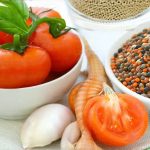Living with overactive bladder (OAB) or other urinary issues can significantly impact daily life, often requiring careful consideration even when something as simple as choosing what to eat comes into play. Many individuals find themselves restricting fluids, but dietary choices extend far beyond just how much you drink; they encompass what you consume. Certain foods and beverages are well-known bladder irritants, while others can be incredibly soothing and supportive for those managing urinary health. This isn’t about deprivation or a bland diet – it’s about making informed food selections that allow you to enjoy comforting meals without exacerbating symptoms. It’s about finding nourishment and pleasure in eating while prioritizing wellbeing.
The goal is to discover foods that won’t put undue stress on the bladder, allowing for more predictable and comfortable days. This often involves understanding how different ingredients affect your individual system, as sensitivities can vary widely. While there’s no one-size-fits-all answer, a foundation of gentle, easily digestible foods generally proves beneficial. Comfort food doesn’t have to be off-limits; it simply needs thoughtful adaptation. Think about swapping out irritating components for bladder-friendly alternatives and focusing on recipes that are naturally less likely to trigger symptoms. This article will explore comforting meal ideas designed with bladder health in mind, offering practical advice and inspiring culinary possibilities.
Soothing Soups & Stews
Soups and stews are naturally hydrating (when made with appropriate liquids) and can be incredibly comforting, but their ingredients matter enormously when considering bladder sensitivity. The key is to avoid common irritants like tomatoes, citrus fruits, and spicy seasonings. Broth-based soups are generally preferable to cream-based ones, as dairy can sometimes contribute to inflammation that might affect urinary function. Focus on mild flavors and gentle cooking methods. To learn more about building a bladder-friendly diet, explore other helpful food choices for minimal irritation.
A fantastic option is a simple chicken noodle soup made with homemade or low-sodium broth. Use alkaline noodles like egg noodles instead of tomato-based pasta sauces. Root vegetables such as carrots, parsnips, and potatoes are excellent additions – they offer nutrients without being overly stimulating to the bladder. Similarly, a gentle vegetable stew featuring squash, zucchini, and green beans can be incredibly satisfying. Remember that portion control is also important; while soup is hydrating, excessive fluid intake at once might still trigger urgency.
Consider incorporating herbs like parsley and thyme for flavor, but avoid spices known to irritate the bladder, such as chili powder or cayenne pepper. Furthermore, ensure you’re using fresh ingredients whenever possible, avoiding processed soups that often contain high levels of sodium and hidden irritants. Hydration is key, so opting for a soup with a good liquid content can contribute positively to overall fluid balance without overwhelming the bladder. If you’re looking for ways to manage your fluid intake, consider reviewing these hydration tips.
Gentle Grains & Protein Choices
Building a comforting meal around grains and protein requires similar considerations as soup preparation. Highly acidic foods should be minimized, and emphasis placed on easily digestible options that won’t place extra stress on the urinary system. Rice – particularly white rice over brown due to its lower acidity – is an excellent base for many meals. Quinoa, though nutritious, can sometimes cause issues for those with extreme sensitivities, so it’s best to introduce it cautiously and observe your body’s reaction.
Protein sources should be lean and mild. Chicken breast, turkey, and fish (especially salmon) are all good choices. Avoid red meat as it can be harder to digest and potentially contribute to inflammation. When preparing protein, avoid marinades containing citrus juice or vinegar. Simple baking, poaching, or steaming methods are preferable to frying. Pairing your protein with gentle grains and steamed vegetables creates a well-rounded and bladder-friendly meal. For more insight into choosing the right proteins, consider optimal protein options for bladder health.
Dairy presents a bit of a challenge. Some individuals find dairy products exacerbate their OAB symptoms, while others tolerate them well. If you suspect dairy is an issue, experiment with alternatives like almond milk or oat milk. Generally, hard cheeses are less likely to cause problems than soft cheeses. The goal isn’t elimination but mindful consumption and paying attention to how your body responds.
Comforting Breakfast Options
Breakfast can often be a minefield for bladder sensitivities due to the prevalence of citrus fruits and caffeinated beverages. However, there are plenty of comforting options that won’t trigger symptoms. Oatmeal made with water or almond milk is a fantastic start – avoid adding acidic fruits like berries initially. Consider topping it with a drizzle of maple syrup or a small amount of banana.
- A warm bowl of cream of wheat (prepared similarly to oatmeal) provides a comforting texture and gentle flavor.
- Scrambled eggs are generally well-tolerated, but avoid adding tomatoes or peppers during preparation.
- Toasted white bread with a light spread of almond butter is another simple and bladder-friendly choice.
Remember that hydration starts first thing in the morning, so sipping water alongside your breakfast is essential. Avoid coffee, tea (even herbal teas can sometimes be irritating), and juice. If you absolutely need caffeine, opt for very small amounts and monitor your symptoms closely. Experiment with different options to find what works best for you. You might also want to explore gentle morning drinks that won’t aggravate your system.
Snack Solutions That Support Bladder Health
Snacking between meals can help maintain stable blood sugar levels and prevent overeating during main courses. However, the same principles apply – avoid bladder irritants! Instead of reaching for acidic fruits or spicy chips, consider these alternatives:
- Rice cakes with a thin layer of almond butter.
- A small handful of unsalted almonds or walnuts.
- Sliced cucumber and carrots with hummus (check ingredients for potential irritants).
- Plain yogurt (if tolerated) with a drizzle of honey.
Mindful snacking is key. Avoid large portions, as this can overwhelm the bladder. Listen to your body’s cues and stop when you feel satisfied, not stuffed. Preparing snacks in advance can help you avoid impulsive choices that might trigger symptoms.
Adapting Favorite Recipes
One of the most empowering things you can do is adapt your favorite recipes to make them more bladder-friendly. This often involves simple substitutions. For example:
- Replace tomato sauce with a mild cream sauce (if dairy is tolerated) or a pesto made without pine nuts (some individuals find pine nuts irritating).
- Omit citrus juice from marinades and dressings.
- Reduce the amount of spice used in cooking.
- Substitute brown rice for white rice if you tolerate it well, but be mindful of its acidity.
Don’t be afraid to experiment! The goal isn’t to completely eliminate your favorite foods, but to modify them so you can enjoy them without experiencing discomfort. Keep a food diary to track which ingredients trigger symptoms and adjust your recipes accordingly. This personalized approach is the most effective way to navigate dietary restrictions while still enjoying comforting meals. Remember that thoughtful snacking can also play a big role in managing your symptoms.





















